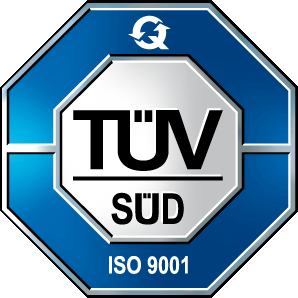
stay up to date
Subscribe to the Ignite Magazine Newsletter
Automotive, Battery, Charging Stations, EV
New Risks and Components in E-Mobility: Changing the Fire Risk Scenario
The transition to electric vehicles (EVs) heralds a new era in transportation, promising reduced emissions and enhanced energy efficiency. However, this shift also introduces new risks and components that significantly alter the fire risk scenario compared to traditional internal combustion engine (ICE) vehicles. Understanding these risks is crucial for developing effective safety protocols and technologies to ensure the safe adoption of e-mobility.
Battery Composition and Chemistry
At the heart of EV fire risks is the lithium-ion battery, known for its efficiency but also susceptible to thermal runaway. This condition, where an increase in temperature can lead to a self-sustaining reaction, potentially causes fires. The high energy density of these batteries means that if ignited, they can burn intensely and spread quickly. Unlike gasoline, which burns in a more controlled manner, the flammable electrolyte in lithium-ion batteries poses severe fire hazards if the battery is damaged or improperly managed.
Electrical Systems
EVs operate on high-voltage systems, usually up to 800 volts, significantly higher than the 12-volt systems in ICE vehicles. This introduces the risk of electrical fires due to short circuits, insulation failures, or other electrical faults. The extensive wiring network in EVs, necessary to connect various high-power components, further complicates the risk profile.
Thermal Management
Effective thermal management is crucial in EVs to prevent overheating of the battery pack. Cooling systems are designed to regulate the temperature of the batteries, but malfunctions in these systems can increase fire risk. Poor heat dissipation can cause localized hotspots within the battery pack, raising the likelihood of a thermal runaway event.
Material Changes
To improve efficiency, EV manufacturers often use lightweight materials and composites. These materials enhance performance but also have different flammability characteristics compared to the conventional materials used in ICE vehicles. For instance, some composites can be more flammable, and when they burn, they can release toxic fumes, posing additional risks to passengers and first responders.
Battery Packaging and Design
The design and packaging of battery packs are critical for fire safety. Batteries need to be adequately protected from physical damage during normal operation and in the event of a crash.
Charging Infrastructure
The charging infrastructure for EVs presents another set of risks. Home chargers and public charging stations can be sources of electrical faults if not properly maintained or if substandard equipment is used. Fast-charging stations, which operate at very high power levels, can introduce additional thermal and electrical stresses on the battery, potentially leading to overheating and fires.
GULEC: Pioneering Solutions for EV Fire Safety
GULEC has pioneered the development of advanced flame retardant additives for lightweight materials and polymers crucial in EV design and production. Our innovative synergists and proprietary simulation techniques enable us to create tailored solutions for composite products, foamed materials, and expandable fillers that meet stringent fire safety standards. With cutting-edge analytical capabilities and extensive experimental testing, we enhance flame retardancy while maintaining essential properties like electrical conductivity, crucial for applications such as battery insulation barriers in EVs.
MORE FROM IGNITE MAGAZINE
The Antimony Clock Is Ticking
Antimony prices are soaring, and availability is shrinking. If you’re still relying on ATO in your flame retardant formulations, now’s the time to rethink. In this quick update, we outline why switching to halogen-free alternatives like GERPHOS isn’t just safer—it’s smarter.

Plant-Based Leather Alternatives: Pioneering Sustainability with Advanced Flame Retardants
What if the future of fashion and upholstery is growing in a field, not a factory? How are plant-based leathers and advanced flame retardants redefining sustainability and style? Discover the innovative materials paving the way for a greener tomorrow.
eco-friendly materials, Innovation, Plant-based, Sustainability, Vegan Leather

Pioneering Fire Safety in Aviation’s Greener Era
Aviation enters a new horizon, redefining the boundaries of safety with cutting-edge flame retardant technologies. Discover how the future of flying could soar with innovative materials designed to meet the highest safety and environmental standards.
aviation, circular economy, halogen free, light weight materials, novel polymers

Ending the Antimony Era: Seven steps towards a safer, compliant and future-proof business
Antimony’s final curtain call is here, setting the stage for a new era in flame retardant applications. What lies beyond could redefine safety and sustainability for industries worldwide.
antimony trioxide, ban, carcinogenic, plasticized PVC, regulations




